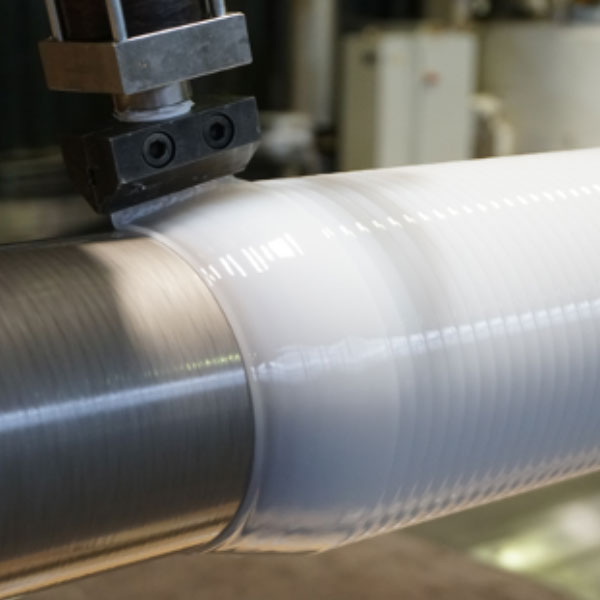FKM to contact: +49 203 348 339-0 | FKM-Germany: DE
Polyurethane (PU, PUR) is a polymer plastic in which the polymer chains are formed by a poly-addition reaction of polyols and isocyanates (MDI or TDI). The polyols used have at least two OH groups as reactive functional groups, while the isocyanates have at least two NCO groups. Mixing polyols and isocyanates produces polyurethane chains through polyaddition. This means that the NCO groups bond with the OH groups, forming the NH-CO-O urethane groups that are characteristic for these polymer molecules.
Their high volatility and reactivity make isocyanate monomers dangerous to process. Therefore, the user does not produce polyurethane materials from isocyanate and polyol monomers. Instead, prepolymers that carry isocyanate molecules at their ends are used. Rather than the volatile, highly reactive monomers, this provides a liquid that can be handled safely, with a strongly reduced concentration of the reactive NCO end groups. The industry provides pure polyols in the form of pre-polymerized chains to the user as the second liquid component. These two chain molecules generally can react directly with each other. This reaction would be too slow in many cases, however. To counter this, highly reactive crosslinking agents are added to make the prepolymers and polyols link much more quickly.
Different crosslinking degrees and use of different polyols or isocyanates leads to a great variety of properties for the polyurethanes. The elastomer form of polyurethane is particularly interesting for roll coverings or hose segments. Polyurethane is a competitor of rubber here. Depending on application, polyurethane outperforms rubber in mechanical properties and wear behavior. However, rubber is often superior in thermal stability or chemical resilience. As a result, polyurethane and rubber always coexist as roll lining and hose.
The chemical industry offers a vast range of polyols, prepolymers, cross-linkers, and other formulation ingredients. FKM is competent in developing formulations and recipes from such precursors, adapted to customer requirements. The choice of polyol is particularly vital.
FKM predominantly uses three types of polyols in order to achieve the different property structures: Polyether polyol, polyester polyol, and polycarbonate polyol.
FKM uses polyurethanes based on polyether polyols under the name of Ribopur-A. These materials are a good compromise between mechanical properties, wear-resilience, and resilience against hydrolysis and mineral oils. The application temperature should not exceed 80 °C.
Ribopur-E is a polyurethane based om polyester polyols. Cutting resilience and wear-resilience are once again improved over those of Ribopur-A; hydrolysis resilience, however, is much lower. The material is very good when oil and solvents are involved, but not in contact of water or steam. The maximal usage temperature is at 80 °C here as well.
In order to meet the highest demands, FKM is offering Ribopur-C, a polyurethane material based on polycarbonate polyols. This material combines excellent mechanical properties with the best hydrolysis resilience, as well as resilience to oils or solvents. The application temperature can be up to 130 °C.
FKM processes polyurethane in rotation casting. The liquid polyurethane mix is applied to the rotation-symmetrical bodies to be coated directly without a mold via a nozzle. Similar to work on a lathe, the body is slowly turned while the nozzle moves longitudinally, casting on the material in a spiral. The polyurethane does not drip off because its chemical properties make it react very quickly, turning it highly viscous. On the other hand, it remains reactive long enough to let the spirals chemically link to each other. It is even possible to coat over a completely cast layer again to increase thickness or to implement a layer structure with different properties.
